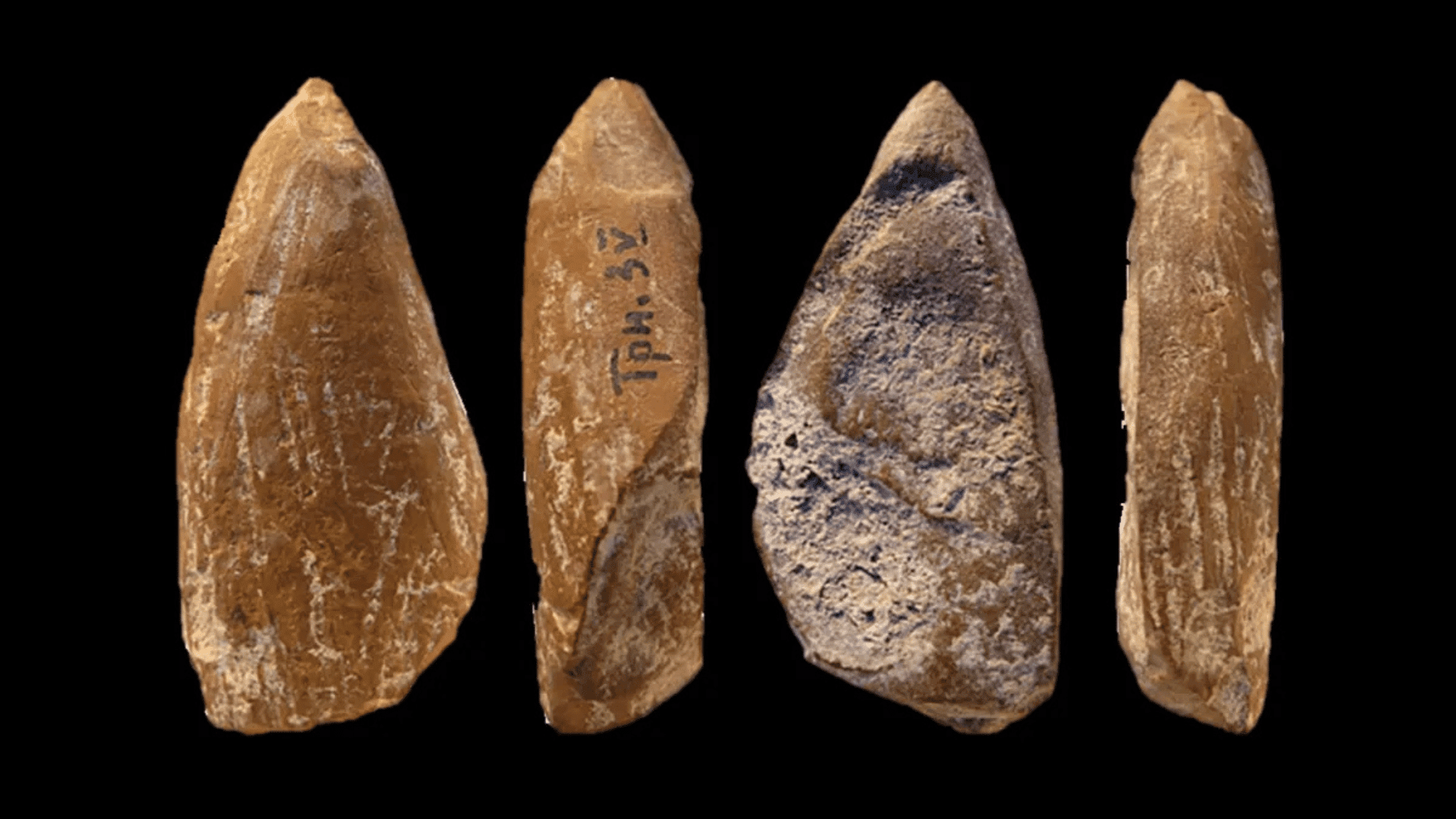Though creating art has always been thought of as a distinctly homo sapiens behavior, the recent discovery of a 42,000-year-old crayon-like piece of ocher suggests that Neanderthals may have also been artists.
Ancient Art

Researchers investigated 16 pieces of ocher connected to Neanderthals that were found in Crimea and mainland Ukraine. The team used microscopic and chemical analysis to identify deliberate modifications, with techniques “including grinding, scoring, flaking, and scraping.”
Three of the pieces they examined showed “features exceeding utilitarian use.” An approximately 4.5-centimeter-long, 1.2-centimeter-thick (1.8 and 0.5-inch) fragment of yellow ocher that was “fully-shaped into a crayon-like tool with a pointed morphology” contained marks suggesting that it was periodically resharpened to maintain its point, and signs of wear from “contact with a surface under applied pressure.”
According to authors of the study, the piece of ocher “appears to have functioned as a marking tool, akin [to] a pencil, used to produce lines on a surface. The combination of shaping, maintenance, and wear traces underscores its curated nature and sustained utility as an instrument for drawing or marking.”
“It was a tool that had been curated and reshaped several times, which makes it very special,” study author Francesco d’Errico told New Scientist.
D’Errico and colleagues believe that it may have been used to mark skin, clothing, bags, or stone. The other two pieces that showed signs of symbolic use, rather than merely practical use, included a red ocher fragment that the researchers believe was once a larger piece shaped like a crayon, and an orange ocher fragment with deliberately made grooves and signs of being smoothed and polished.
“Interpretive caution is, of course, warranted when evaluating the use of mineral colorants, given their multifunctionality,” the team acknowledges, while also arguing that “the deliberate shaping and reuse of crayons, the engraved motifs, and the evidence for curated tools collectively support the conclusion that at least some ochre materials were involved in symbolic activities.”
“These objects and the markings they produced likely played roles in communication, identity expression, and intergenerational knowledge transmission. The curated nature of the ochre fragments further supports this interpretation, suggesting that they were preserved, transported, and reused—behaviors that reflect both planning and cultural investment,” they added.
The study is published in Science Advances.


